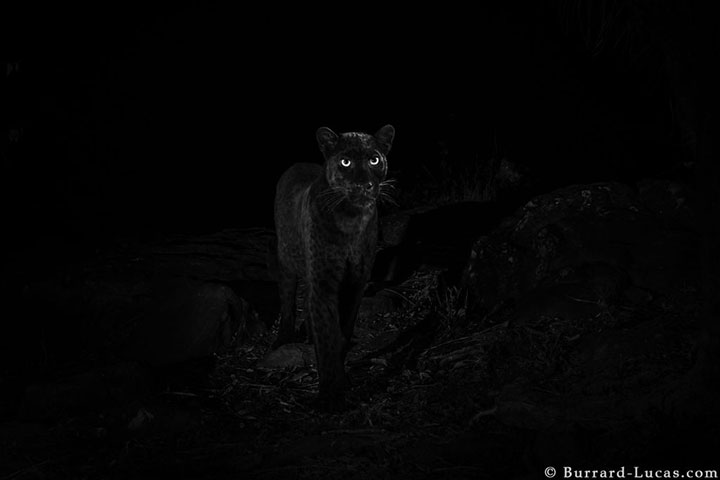A wildlife photographer has captured incredible photos of an extremely rare black leopard roaming in Kenya. British photographer Will Burrard-Lucas managed to get once-in-a-lifetime images of the elusive animal, the first time anybody has secured a photo of one in nearly 100 years.

Ever since Burrard-Lucas was a child, he’s been fascinated by the lore and stories of the elusive black panther, and only dreamed of ever seeing one. (The terms “leopard” and “panther” are interchangeable when referring to the African species.)
“For me, no animal is shrouded in more mystery, no animal more elusive, and no animal more beautiful,” the photographer described in a blog post. “For many years they remained the stuff of dreams and of farfetched stories told around the campfire at night. Nobody I knew had ever seen one in the wild and I never thought that I would either.”
That changed last month when he captured stunning images of the nocturnal cat in Laikipia Wilderness Camp.
Using what’s known as camera traps — motion-sensitive cameras and flashes that are set up in an area with the hope of an animal triggering it, capturing it in a frame — he managed to get some pictures of the animal.
Burrard-Lucas got wind of a possible sighting of the creature lurking in the camp and contacted the owners, and he was told there had been several black leopard sightings over the years. So, off he went.
After the first attempt, Burrard-Lucas came up with nothing.
“I left the cameras for several more nights. On returning, I checked them and by the time I got to the last camera, all I had seen were pictures of hyenas but no leopards,” the photographer noted in his blog. “I had a quick look at the last trap, not expecting to find much. As I scrolled through the images on the back of the camera, I paused and peered at the photograph below in incomprehension… a pair of eyes surrounded by inky darkness… a black leopard.
“I couldn’t believe it and it took a few days before it sank in that I had achieved my dream,” he said.
Black leopards carry a gene mutation for “melanism” that makes their coats black, but the night-time infrared cameras used by Burrard-Lucas can reveal their spots.
While he was capturing stills, researchers from San Diego Zoo Global studying leopards in the area set up remote video cameras nearby, publishing their findings in the African Journal of Ecology.
“Collectively, these are the first confirmed images in nearly 100 years of a black leopard in Africa,” said Nicholas Pilfold of the San Diego team, also lead researcher for a leopard conservation program in Laikipia County.
Burrard-Lucas spent a few more days on the leopard’s trail, moving his camera traps along the way. The photographer even captured a stunning image of the elusive cat under a full moon.
“As far as I know, these are the first high-quality camera trap photographs of a wild melanistic leopard ever taken in Africa,” the photographer said.
However, he went on to note that he’s “not claiming that these are the first photos of a black leopard taken in Africa.”
–with a file from Reuters






Comments